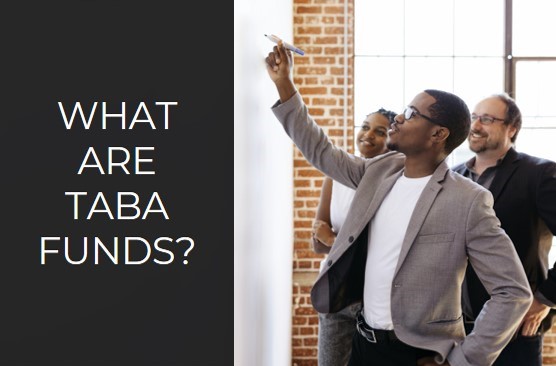
What are TABA Funds and Why Should I be Interested
I have had quite a few questions recently on Technical and Business Assistance (TABA) funds related to what they are, why they might be used for and who can apply for them. First of all TABA stands for Technical And Business Assistance and it was created by the 2019 John McCain National Defense Authorization Act (NDAA) as a way to help small businesses commercialize technologies coming out of the SBIR/STTR program. In the past, there had been a few agencies that offered some limited help to SBIR/STTR awardees by utilizing vendors selected by the agency in pre-defined programs. The National Science Foundation was a good example of this as they assigned a "commercialization specialization" firm to each Phase I awardee to help them formulate a commercialization plan in their Phase II proposals. NSF paid the "commercialization specialization" company for helping each awardee so there was no cost for this service to the awardee.
The 2019 NDAA authorized a specific amount of TABA help for Phase I awardees (up to $6,500) and a specific amount for Phase II (up to $50,000) . These funds are in addition to the SBIR/STTR award amount and will not reduce the amount of maximum award for the technical effort in the SBIR/STTR. The evaluation of TABA funds also will not affect the selection criteria for the merit of the SBIR award, it is evaluated separately. The act also allowed the awardee to choose a firm (to be subsequently approved by the agency) to do this work, rather than depend upon the agency to assign someone to work with (although the awardee can accept the agency's selection for a TABA vendor). This directive from the NDAA was incorporated into the Small Business Administration's (SBA) Policy Directive for the SBIR/STTR program in 2019, and again in 2020, and most likely will be in the SBA Policy Directive again in 2021. The 2019 NDAA authorized the SBIR/STTR program funding through September of 2022, which is also the period for the TABA funds authorization. The SBIR/STTR program will need to be re-authorized by Congress prior to September 2022 and it is expected that the TABA funds will be part of this renewal. The NDAA did request a report be submitted to congress on the success and effectiveness of the TABA funds to help evaluate the usefulness of the program in the future.
The TABA funds were designed to basically help small businesses commercialize the technologies they were developing in the SBIR/STTR awards. Usually these small businesses are high in technical expertise but not as experienced in product development and commercialization. The NDAA identified 4 major goals for the TABA funds:
- making better technical decisions on SBIR/STTR projects
- Solving technical problems that arise during SBIR/STTR projects
- Minimizing technical risks associated with SBIR/STTR projects
- Commercializing the SBIR/STTR product or process, including
intellectual property protections.
The SBA Program Directive also indicates TABA funds may include access to a network of scientists and engineers engaged in a wide range of technologies, assistance with product sales, intellectual property protections, market research, market validation, and development of regulatory plans and manufacturing plans, or access to technical and business literature available through on-line databases.
The NSF further defines TABA funds for SBIR/STTR awardees from this agency:
- the identification and development of customers for the NSF-funded technology;
- providing advice on financing strategy and fundraising from the private sector;
- establishing strategic partnerships with relevant stakeholders;
- the evaluation and protection of intellectual property;
- the evaluation and establishment of regulatory and reimbursement strategy; and/or
- other activities that will accelerate or strengthen the commercialization case for the underlying technology.
As you can easily see, the funds are primarily targeted to help commercialize technologies sponsored by the SBIR/STTR. TABA funds are issued by each agency and they are in addition to the SBIR/STTR award money. The money, however, must be used to help in these areas that lead toward commercialization and they must be spent with a third party expert to provide these services for the firm (either a vendor recommended by the agency or one selected by the awardee and approved by the agency). The funds may not be spent internally in the awardee's company. The funds are authorized up to $6,500 for Phase I and up to $50,000 for Phase II awards. A few agencies are selecting funding limits for the TABA funds that are below these limits, and that is acceptable. For instance, the Department of Transportation has put limits on their TABA funds that are below these maximums defined by the 2019 NDAA (DOT Phase I limit is $5,000 and Phase II limit is $13,000).
Small Business awardee's should all take advantage of this program, this is basically free help to the small business. The SBA is tracking commercialization success within the SBIR program and assigning a commercialization score to each awardee. The more SBIR's a firm pursues, the more important it is to show some success in commercializing a product using the SBIR/STTR funds. This program helps enhance the chances of success in commercializing the technology from the research and development sponsored by the SBIR/STTR programs.